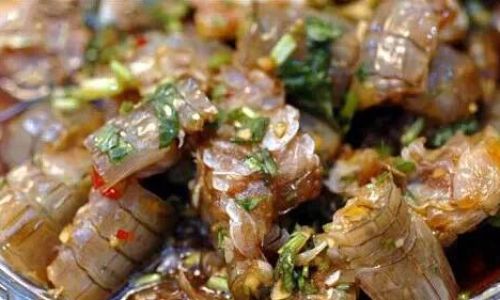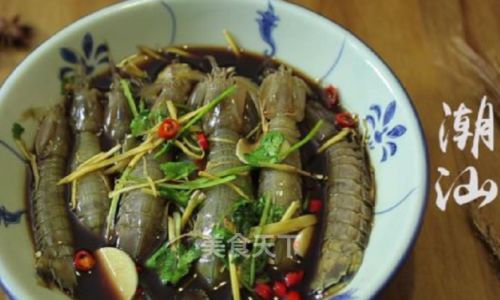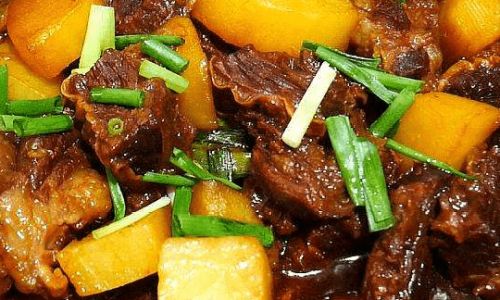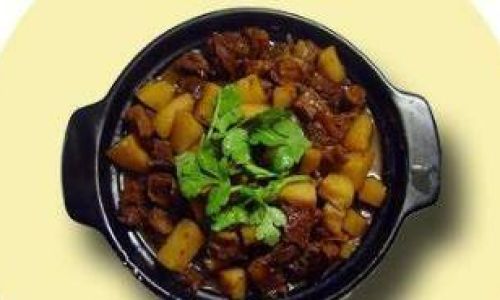Introduction
Chaoshan cuisine, a regional culinary tradition originating from the eastern Guangdong province in China, is renowned for its emphasis on preserving the inherent flavors of fresh seafood through minimalistic yet precise cooking techniques. Among its iconic dishes, marinated shrimp saguenay (潮汕生腌虾姑) stands as a testament to the art of balancing texture, aroma, and taste. This dish, often dubbed “raw marinated mantis shrimp,” is a beloved delicacy that showcases the Chaoshan people’s reverence for oceanic freshness. Unlike cooked preparations, marinating allows the shrimp’s delicate sweetness and briny essence to shine while infusing it with a symphony of aromatic spices. This article delves into the history, cultural significance, and meticulous preparation of Chaoshan-style marinated shrimp saguenay, offering a detailed guide to recreate this culinary masterpiece at home.
The Cultural Tapestry of Chaoshan Cuisine
Chaoshan’s geographical position along the South China Sea has long influenced its gastronomic identity. Fishermen and coastal communities have historically relied on the ocean’s bounty, developing preservation methods that extend the shelf life of seafood without compromising its quality. Marination, or shengyan (生腌) in the local dialect, emerged as a cornerstone of this philosophy. By submerging freshly caught seafood in a brine of vinegar, soy sauce, garlic, and spices, Chaoshan chefs achieved a dual purpose: inhibiting bacterial growth and imbuing the flesh with layers of umami.
Shrimp saguenay, scientifically known as Oratosquilla oratoria, is a species of mantis shrimp prized for its tender meat and subtle sweetness. Its exoskeleton, though intimidating with its spiky texture, yields to careful handling, revealing a treasure trove of flavor. In Chaoshan, marinated shrimp saguenay is not merely a dish—it is a cultural emblem, served during festivals, family reunions, and banquets as a symbol of hospitality and respect for tradition.
Ingredients: The Alchemy of Flavor
Crafting authentic Chaoshan-style marinated shrimp saguenay demands precision in ingredient selection. Each component plays a distinct role in elevating the dish’s complexity:
- Shrimp Saguenay (1.5 lbs): Opt for live, vibrant specimens with intact shells. Freshness is non-negotiable, as the dish’s success hinges on the shrimp’s pristine quality.
- Coarse Sea Salt (3 tbsp): Used for initial cleansing, salt draws out impurities and firms the meat.
- Rice Vinegar (½ cup): The acidity gently “cooks” the shrimp while neutralizing any lingering fishiness.
- Light Soy Sauce (1 cup): A staple in Chinese cooking, it provides saltiness and depth.
- Dark Soy Sauce (2 tbsp): Adds color and a hint of caramelized sweetness.
- Shaoxing Wine (¼ cup): This fermented rice wine imparts a nutty aroma and tenderizes the meat.
- Fresh Garlic (1 head, minced): A pungent base that mellows into a fragrant backbone.
- Cilantro Stems (½ cup, chopped): Their grassy freshness cuts through the richness.
- Fresh Thai Bird’s Eye Chilies (10–12, sliced): Adjust to taste; they contribute fiery heat.
- Ginger (3-inch knob, julienned): Warms the palate and counteracts seafood’s coldness in traditional Chinese medicine.
- Sugar (1 tbsp): Balances the salinity and acidity.
- Sesame Oil (1 tsp): A finishing touch for nutty richness.
- Optional: Sichuan Peppercorns (1 tsp, toasted and ground): For a tingly numbness (ma la) characteristic of Sichuan cuisine, though some Chaoshan purists omit this.
Preparation: A Dance of Patience and Precision

Cleaning and Preparing the Shrimp
The first step is critical: ensuring the shrimp are impeccably clean. Rinse them under cold running water, then transfer to a large bowl. Sprinkle with coarse sea salt and toss gently. The salt will dislodge any debris and paralyze the shrimp, making them easier to handle. Let them sit for 10 minutes, then rinse again.
Using kitchen shears, trim off the sharp spines along the shrimp’s back and sides. This not only makes the dish safer to eat but also allows the marinade to penetrate deeper. Some chefs opt to make a shallow incision along the shrimp’s belly to expose the meat further—a technique called “kai bei” (开背)—though this is optional.
The Initial Blanch (Optional)
Traditional recipes sometimes recommend a quick blanch in boiling water to sterilize the shrimp. However, purists argue that this step compromises texture. If concerned about food safety, submerge the shrimp in rapidly boiling water for 10 seconds, then shock in an ice bath. Pat dry thoroughly before proceeding.
Crafting the Marinade
The marinade is where flavor alchemy occurs. In a non-reactive bowl (glass or ceramic), combine rice vinegar, soy sauces, Shaoxing wine, sugar, and sesame oil. Whisk until the sugar dissolves. Add the garlic, cilantro stems, chilies, ginger, and Sichuan peppercorns (if using). Stir to combine.
Marinating Process
Place the cleaned shrimp in a deep, airtight container. Pour the marinade over them, ensuring each shrimp is submerged. Seal the container and refrigerate. The marination time is a delicate balance:
- 2–3 hours: For a tender, almost sashimi-like texture.
- 4–6 hours: The meat firms up slightly, absorbing more flavor.
- Overnight: Recommended for maximum infusion, though the texture becomes closer to ceviche.
Gently flip the shrimp every hour to ensure even marinating.
Serving and Presentation
Chaoshan-style marinated shrimp saguenay is traditionally served chilled. Transfer the shrimp to a serving platter, spooning some marinade over them. Garnish with fresh cilantro leaves and thinly sliced red chilies for visual appeal.
Pairing Suggestions
- Congee: The dish’s briny richness complements a bowl of plain rice congee (bai zhou).
- Chilled Beer: A crisp lager or wheat beer cuts through the spice and umami.
- Steamed Rice: For a modest meal, pair with jasmine rice and stir-fried greens.
Culinary Nuances and Tips
The Role of Acidity
Rice vinegar acts as a natural preservative and tenderizer. Its mild acidity gently denatures the shrimp’s proteins, creating a texture akin to cooked shrimp without heat. Avoid substituting with harsher acids like distilled vinegar, which can overpower the delicate flavor.

Adjusting Spice Levels
Thai bird’s eye chilies are fiery but fragrant. For a milder version, remove the seeds or use jalapeños. Conversely, adding dried chili flakes during marination amplifies the heat.
Texture Considerations
The longer the marination, the firmer the shrimp becomes. Some diners prefer the initial softness, while others relish the chewier texture after an overnight soak. Experiment to find your preference.
Health and Safety
While marination reduces bacterial risks, consume the dish within 24 hours. Pregnant individuals or those with compromised immune systems should avoid raw seafood.
Variations and Innovations
Modern chefs have experimented with the classic recipe, introducing creative twists:
- Citrus Zest: Adding lime or yuzu zest for a floral brightness.
- Herbal Infusions: Incorporating basil, mint, or even dill for a Mediterranean flair.
- Sweet Elements: A drizzle of honey or date syrup to balance spice.
However, traditionalists argue that such modifications dilute the dish’s authenticity.
The Philosophical Underpinnings of Chaoshan Cuisine
Beyond its culinary merits, marinated shrimp saguenay embodies Chaoshan’s philosophical approach to food: “xian” (鲜), or freshness, is paramount. The dish’s preparation reflects a harmonious relationship with nature—seizing the sea’s fleeting gifts and transforming them into enduring flavors. It is a culinary meditation on patience, precision, and respect for ingredients.
Conclusion
Chaoshan-style marinated shrimp saguenay is more than a recipe—it is a narrative etched in brine, spice, and time. Mastering this dish requires attention to detail and an appreciation for the subtle interplay of flavors. Whether enjoyed as an appetizer at a banquet or a humble family supper, it invites diners to savor the ocean’s essence in every bite. As Chaoshan chefs often remark, “shengyan bu shi sheng, er shi sheng huo” (生腌不是生,而是生活)—“Marination is not rawness; it is life itself.”
With this guide, adventurous home cooks can embark on a journey to replicate this iconic dish, bridging continents and cultures through the universal language of gastronomy.






0 comments